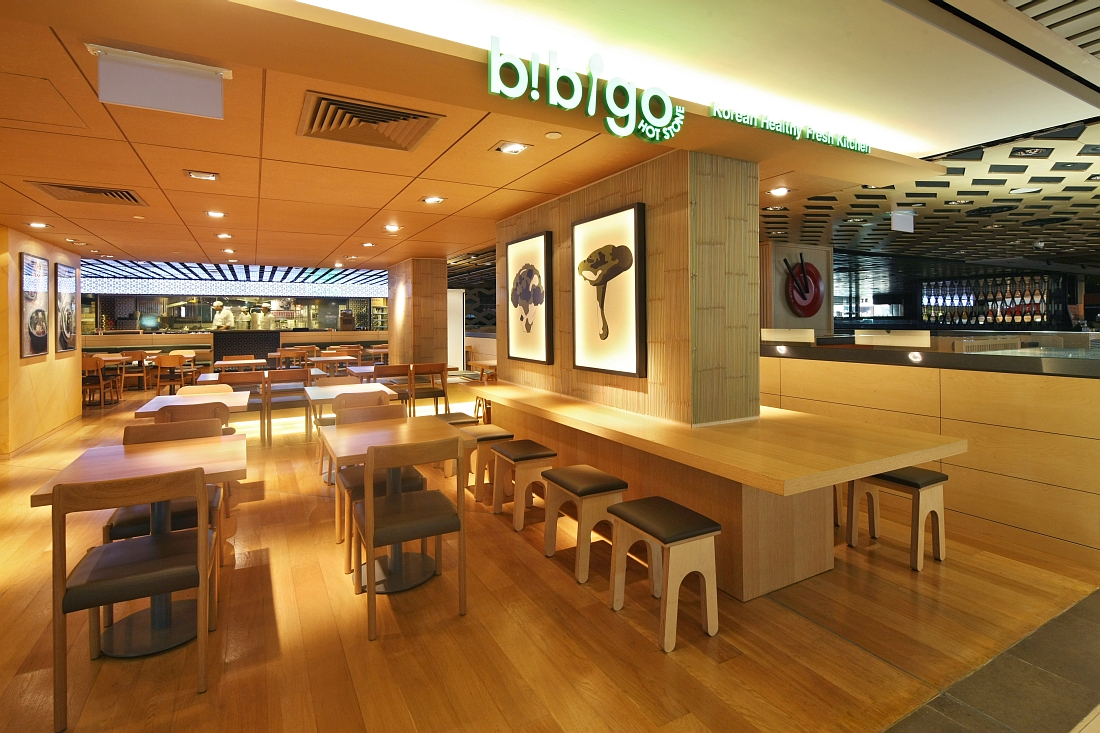Korean Culinary Franchise

In April this year, the Ministry of Agriculture, Food and Rural Affairs announced that the government will work to nearly double the number of Korean restaurants in other countries, a move aimed at developing the country's restaurant industry and globalizing its traditional food.
This is not the first time the government has worked to globalize the Korean eatery industry. Under the Lee Myung-bak administration, a mostly government-led campaign focusing on traditional Korean cuisines had First Lady Kim Yoon-ok as the spokeswoman.
The government still has an important role to play, but the vital force for Korean food globalization these days stems from locally-flourishing businesses seeking new opportunities. In addition, the popularity of Korean pop culture in China and Southeast Asian countries, or the so-called Hallyu, helps boost the international demand for Korean food.
Since 2010, there is an increasing incidence of Korean franchise businesses in the food industry turning their attention to foreign markets. This time, their motives often relate to the saturation of the local market and search for new opportunities.
As of Dec. 2014, 120 Korean franchise companies had established 3,726 locations abroad. Interestingly, most of their menus focus on non-Korean dishes -- the ratio of non-Korean to traditional Korean food restaurants is 3,378 to 348. A majority of franchises that have recently entered foreign markets are also latecomers in the chicken and coffee industry in Korea.
This foreign expansion is rapidly on the rise among Korean restaurant franchise companies. Compared to 2013, the number of overseas locations of Korean franchises increased by 1,009.
Geographically, the franchise locations tend to be concentrated in Asia, where there are 2,516, followed by North America with 1,036. By country, 1,505 Korean restaurant franchises are in China, followed by the U.S. with 959, Singapore with 81, the Philippines with 192, and Indonesia with 72.
Given that the low recognition of Korean culture has been one of the major barriers in attracting customers in the past, the popularity of Korean content, so-called Hallyu, has proved vital in boosting local demand for Korean food. In fact, in a study published by the Korea Agro-fisheries & Food Trade Corp (AT), the popularity of Hallyu ranks 2nd in the list of considerations, following market size, when Korean restaurant business people decide on overseas business expansion.
Many still consider government support to be useful. A survey by the AT noted that local franchises benefited from market information provided by KOTRA. In addition, given the challenges in establishing the local network and assessing distributional channels in overseas markets, many wish that the government could match them with local business partners.
All in all, it is worth noting that the recent globalization trend differs from the Korean food globalization project that former First Lady Kim Yoon-ok championed with overarching government leadership. The trend has developed at the grassroots level alongside the soaring popularity of Hallyu throughout Asia, and fed by enthusiastic and risk-taking local entrepreneurs in their search for new opportunities.


